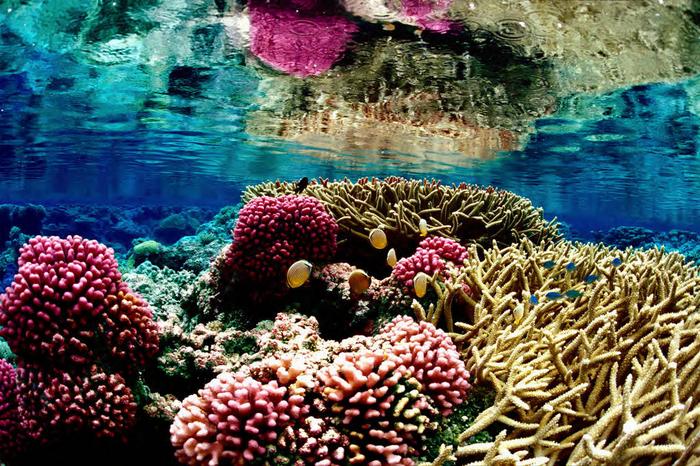Roughly 2 million species live in the world’s ocean. But scientists have only described a mere 10% of them. With extinctions on the rise and biodiversity threatened worldwide, many species are in danger of vanishing before researchers can identify them or fully grasp the benefits they provide.

Credit: U.S. Fish and Wildlife Service
Roughly 2 million species live in the world’s ocean. But scientists have only described a mere 10% of them. With extinctions on the rise and biodiversity threatened worldwide, many species are in danger of vanishing before researchers can identify them or fully grasp the benefits they provide.
The National Ocean Biodiversity Strategy calls for a stronger, more unified and inclusive approach to ocean conservation. Written by a team led by the Smithsonian and the National Oceanic and Atmospheric Administration (NOAA), the strategy was announced by the White House Office of Science and Technology Policy on June 3. It represents the first nationwide strategy aimed at changing course to save marine life and all the services it provides to people. The plan seeks to improve scientists’ ability to gather and share knowledge and use that knowledge for more effective protections.
“We are confronting biodiversity loss and its implications for human well-being, alongside the challenges posed by climate change and social inequity,” said Ellen Stofan, Under Secretary for Science and Research at the Smithsonian. “But we hold the power to overcome these obstacles with a united, society-wide effort to preserve nature and its benefits.”
The prosperity and health of the U.S. is inextricably tied to the ocean and its life. The ocean contributes nearly $400 billion to the U.S. economy every year and provides 2.4 million jobs according to NOAA, including fishing, shipping, tourism and energy. And the nation’s ocean waters are vast: The total ocean territory under U.S. management—known as the “U.S. Exclusive Economic Zone”—covers an area larger than all 50 states combined. Much of this prosperity comes from the ocean’s diverse species and habitats.
“Life in the ocean touches everyone,” said Gabrielle Canonico, leader of the U.S. Marine Biodiversity Observation Network at NOAA and co-chair of the team that wrote the strategy. “Every other breath we take comes from the oxygen produced by microscopic ocean plants, and more than a billion people worldwide rely on food from the ocean as their primary source of protein. But these and other benefits will degrade with biodiversity loss, with dire consequences especially for frontline communities.”
Critical gaps remain in the nation’s protection and even knowledge of ocean life. The knowledge scientists do possess about the ocean is often scattered, with many organizations gathering information in different formats that are difficult to share. Many smaller organisms, including those that cause disease, are barely studied at all. Scientists suspect these neglected species contain secrets vital to keeping coral reefs and fisheries thriving and the ocean’s plankton pumping atmospheric carbon into the deep sea. The strategy addresses this challenge with plans to strengthen the nation’s ocean observing system and the information pipeline that delivers knowledge to those who need it.
“We are advancing frontier technologies for biodiversity science and understanding,” said Sarah Kapnick, NOAA chief scientist. “But it is critical that we come together around the use of evidence-based metrics and indicators for decision-making in ocean spaces, and for monitoring, reporting, and verification to ensure that investments in conservation or development deliver the desired outcomes while minimizing negative impacts to ocean life.”
“Biodiversity is the beating heart of the ocean that supports society, but it’s in trouble,” said Emmett Duffy, the other co-chair of the strategy’s writing team and chief scientist of MarineGEO at the Smithsonian Environmental Research Center. “This strategy is our best chance yet to turn the tide. We need to implement it to reach a future where people and the rest of nature thrive together by joining forces and leveraging the power of people and technology to understand the living ocean ecosystem.”
The National Ocean Biodiversity Strategy outlines a three-fold plan to create a more inclusive, evidence-based network of protection in U.S. ocean waters and the Great Lakes:
- Coordinate ocean research and conservation across the U.S. As a first step, the strategy would bring together federal agencies with ocean-related missions to engage stakeholders, including states, Tribes and local communities, toward co-designed solutions. A key part of this process is documenting the economic and cultural values of the ocean, to reveal the hidden costs of degrading nature and include them properly in economic decision making across both government and private sectors.
- Strengthen the information pipeline. The U.S. has a wealth of existing data on ocean life, but much of it is inaccessible to policymakers and managers who are making decisions on the ground. The strategy calls for stronger support of centralized, open-source databases that everyone with a stake in the ocean’s health can find and use. This also requires revamping the neglected field of taxonomy to reveal undiscovered species and harnessing new technologies to track biodiversity, such as environmental DNA (“eDNA”), satellites and artificial intelligence.
- Protect, conserve, restore and sustainably use ocean biodiversity. The strategy’s success hinges on partnerships with all key stakeholders—states, Tribes, local communities, NGOs and the private sector, including commercial and recreational fishers. The strategy calls for listening sessions as a critical starting point for collaborations built on trust. As each group’s needs and contributions are understood, managers can use their continually improving biodiversity knowledge to co-create protection measures that work over the long term, with the benefit of community input.
Lead authors Duffy and Canonico both emphasize that this strategy is a first step—a high-level roadmap to a more sustainable ocean. An implementation plan is currently in development to outline specific actions tailored to regions and communities based on feedback collected through engagement with stakeholders.
The full strategy is available on the Office of Science and Technology Policy website. For photos or to speak with one of the authors, contact Kristen Goodhue at goodhuek@si.edu.
Subject of Research
Animals



